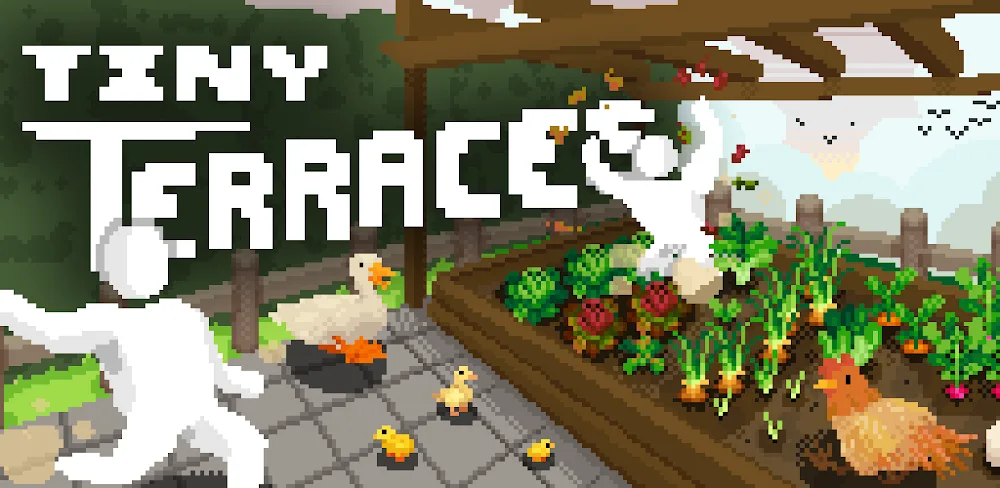Death Line: Saboteur Mod Apk v.1.0.2 (Menu, Damage Multiplier)
- App Name Death Line: Saboteur
- Version 1.0.2
- Sizes 97M
- Requirements Android 6.0
- Developer Brain Storm Studio Games
- Genre Casual
- Updated Nov 07, 2025
- Platform GooglePlay
The allure of worlds teetering on the brink, where humanity’s last vestiges fight for survival against overwhelming odds, has long captivated the collective imagination. In an era where digital entertainment offers increasingly sophisticated and immersive experiences, the post-apocalyptic survival genre continues its meteoric rise, resonating with players seeking both thrilling challenges and profound narratives of resilience. Titles that meticulously craft these desolated landscapes, filled with relentless threats and strategic depth, are not merely games but arenas for testing one’s wits, adaptability, and leadership. As technology advances, allowing for more intricate world-building, dynamic enemy AI, and seamless multiplayer interactions, the genre is experiencing a renaissance, drawing in a global audience hungry for experiences that blend action, strategy, and compelling human drama. The sustained relevance of these narratives lies in their ability to tap into fundamental questions of survival, cooperation, and the very definition of civilization in its absence, making each new entry a significant event for millions of enthusiasts.
MASTERING THE ART OF ADAPTIVE DEFENSE IN THE APOCALYPSE
In the unforgiving realities of a collapsed world, mere survival is often insufficient; proactive defense and strategic foresight are paramount. Games within the post-apocalyptic survival genre, such as “Death Line: Saboteur,” elevate vigilance and defensive planning to an art form, demanding that players not only react to threats but anticipate and mitigate them. The cornerstone of longevity in such a desolate landscape is the construction of a robust and resilient shelter, a sanctuary that can withstand the ceaseless and often brutal incursions of both the undead and hostile human factions. This isn’t merely about erecting walls; it’s about designing a fortified haven capable of resisting multifaceted attacks, ensuring the safety of resources, and providing a strategic command center for future operations. The architectural choices, material selection, and defensive placements within a player’s base become critical decisions, each influencing the outcome of survival against relentless pressure. Understanding the nuances of terrain, enemy behavioral patterns, and the availability of resources transforms base-building into a complex strategic puzzle, vital for long-term endurance.
- Dynamic Progression and Strategic Customization: Modern survival games differentiate themselves through their sophisticated progression systems, offering players unparalleled control over their development. In “Death Line: Saboteur,” this manifests as the freedom to extensively upgrade bases, characters, and armaments whenever strategic needs arise. This dynamic upgrade capability liberates players from restrictive linearity, allowing for immediate adaptation to evolving threats and opportunities. Whether reinforcing fortifications, enhancing character abilities for specialized roles, or forging more potent weaponry, the ability to evolve without arbitrary delays empowers players to consistently maintain a competitive edge. This continuous loop of improvement ensures that players are always equipped to confront increasingly formidable challenges, fostering a sense of constant progression and strategic mastery within the harsh environment.
- The Imperative of Partner Synergy: The solitary survivor trope, while iconic, often gives way to the strategic necessity of cooperation in the face of overwhelming odds. The sheer number and relentless aggression of the infected, coupled with the unpredictable nature of other survivors, necessitate collaborative strategies. “Death Line: Saboteur” emphasizes team dynamics, urging players to forge alliances and coordinate their efforts. Effective teamwork transcends individual prowess, transforming a disparate group into a cohesive fighting force. Implementing group strategies, where each team member’s unique skills are leveraged, and communication flows seamlessly, becomes the key to overcoming seemingly insurmountable challenges. Whether it’s a coordinated raid for supplies, a defensive stand against a horde, or a strategic ambush on a rival faction, success hinges on the ability of partners to synergize their actions. To delve deeper into mobile game cooperative strategies, you can explore the best cooperative mobile games on our site, offering insights into optimal team play.
- Evolving Tactical Variety: A static approach to combat and defense is a recipe for swift demise in a world where every encounter can be fatal. Games like “Death Line: Saboteur” offer an extensive and diverse tactical system designed to encourage innovation and adaptation. Players are not merely presented with a set of pre-defined tactics but are encouraged to experiment with and combine existing strategies. This encourages a fluid and dynamic combat experience, where players can discover countless novel and powerful tactics, often resulting in devastatingly effective new approaches. The ability to merge and evolve old strategies into superior, more damaging configurations ensures that gameplay remains vibrant and unpredictable. This deep tactical layer offers endless possibilities for strategic depth, allowing players to create truly personalized combat styles and surprise their adversaries with unexpected maneuvers, making each engagement a unique test of wit and creativity.
NAVIGATING A RELENTLESS AND IMMERSIVE APOCALYPSE
To truly encapsulate the essence of a world consumed by catastrophe, a game must transport its players into an environment where every step carries weight and every decision holds consequence. In titles like “Death Line: Saboteur,” players are plunged into a crisis-ridden reality, a desolate realm stripped of societal norms and established legal frameworks. Here, the fragile illusion of order has evaporated, replaced by a brutal struggle for existence where self-preservation reigns supreme. This absence of law breeds an atmosphere of constant tension and distrust, as the greatest dangers often emerge not just from the infected, but from the desperate actions of other survivors. Every shattered edifice, every shadowed alleyway, and every desolate expanse is laden with lurking dangers, demanding unwavering caution and strategic awareness from those who dare to traverse them.
- Facing a Spectrum of Threats: The post-apocalyptic landscape, by its very nature, is a crucible of diverse dangers. Beyond the ubiquitous threat of the undead, “Death Line: Saboteur” introduces a multifaceted challenge by pitting players against a variety of adversaries. This includes not only the predictable, albeit relentless, zombie hordes but also the cunning and often ruthless other survivors. These human antagonists, driven by desperation, greed, or the desire for dominance, present a unique psychological and tactical challenge, often proving more unpredictable and dangerous than their undead counterparts. The game also features mutated creatures or specialized infected types, each with distinct behaviors and weaknesses, demanding varied tactical approaches. This rich tapestry of opponents ensures that combat never becomes monotonous, immersing players in a dynamic world where every encounter requires careful assessment and strategic adaptation. The constant interplay between environmental hazards, monstrous threats, and human unpredictability keeps players perpetually engaged, fostering a deep sense of immersion.
- The Rewards of Perilous Exploration: In a world where resources are scarce and safe havens are few, the act of exploration transforms from a leisure activity into a critical survival imperative. “Death Line: Saboteur” intricately weaves adventure into its core gameplay loop, inviting players on perilous journeys into unique and often treacherous locations. These expeditions are fraught with unexpected challenges, from environmental hazards and cunning traps to ambushes by unseen enemies, all while players are desperately searching for vital sustenance and rare supplies. Each discovery, each successful scavenging run, and each new area uncovered brings a rush of accomplishment, making the risk worthwhile. This blend of exploration and resource management creates an incredibly addictive entertainment experience, making players feel as if they are genuinely living and breathing within this harsh world. The thrill of uncovering secrets, the strategic planning required for long-distance treks, and the inherent dangers of the unknown contribute to an immersive narrative that unfolds dynamically with each player’s journey. For those eager to optimize their gameplay, read tips for optimizing mobile game performance and device settings here, ensuring a smoother exploration experience.
THE PSYCHOLOGICAL DEPTH OF SURVIVAL NARRATIVES
Beyond the visceral thrill of combat and the strategic satisfaction of base-building, the most compelling post-apocalyptic survival games delve into the profound psychological impact of living in a world devoid of hope and order. “Death Line: Saboteur” touches upon the core human experience of resilience and adaptation, pushing players to confront not only external threats but also the moral dilemmas that arise when civilization crumbles. The desperate search for resources, the forging of fragile alliances, and the agonizing choices between self-preservation and altruism create a narrative tapestry rich with ethical complexity. This genre often explores themes of loss, despair, and the enduring human spirit, offering players a simulated environment where they can grapple with fundamental questions about humanity’s capacity for both cruelty and compassion under extreme duress. The constant tension between hope and imminent doom creates an emotional resonance that extends far beyond typical gaming experiences, fostering a deeper connection to the game’s world and its inhabitants.
The shared struggle in multiplayer survival games also cultivates a unique form of community. Players are often compelled to collaborate, forming bonds rooted in mutual dependence and shared adversity. This social dimension adds another layer of psychological depth, as trust, betrayal, and camaraderie become critical elements of the gameplay. The triumphs and failures experienced collectively amplify the emotional stakes, transforming individual struggles into a communal narrative of survival. This emphasis on player interaction and emergent storytelling through moral choices and alliances ensures that each playthrough is not just a test of skill, but a compelling human drama unfolding in a world without rules, where the line between hero and villain often blurs, mirroring the chaotic nature of the apocalypse itself.
CONCLUSION: CHARTING A COURSE THROUGH THE DESOLATION
The post-apocalyptic survival genre continues to solidify its position as a cornerstone of modern gaming, offering experiences that transcend simple entertainment to become profound explorations of human endurance. “Death Line: Saboteur” exemplifies the genre’s strengths, providing a rich tapestry woven from strategic depth, an intensely immersive world, and dynamic progression systems. Its emphasis on adaptable defense, the necessity of partner synergy, and a diverse tactical landscape empowers players to truly forge their own path through the desolation. The game masterfully blends the thrill of combating relentless zombie hordes with the psychological complexities of facing other desperate survivors, all within a painstakingly crafted world devoid of law and order.
The enduring appeal of these titles lies in their ability to tap into our innate desire for challenge, discovery, and the ultimate test of resilience. For enthusiasts seeking to engage with a truly demanding yet rewarding experience, the core tenets of “Death Line: Saboteur”—its strategic base-building, continuous character and weapon upgrades, and emphasis on cooperative survival—offer a compelling package. As the gaming landscape evolves, we anticipate further innovations within this genre, perhaps with more sophisticated AI-driven narratives, even larger persistent worlds, and enhanced virtual reality integrations that blur the lines between player and environment. The journey through the apocalypse is far from over; it remains a dynamic frontier, continuously pushing the boundaries of interactive storytelling and challenging players to confront the ultimate questions of survival and humanity’s future.
Whats Mods
MOD Info- Mod Menu
- Damage Multiplier
- Votes: 1
- Comments: 4
Download Death Line: Saboteur for Android for free.
Menu, Damage Multiplier
- Mod Menu
- Damage Multiplier







I’m not sure I agree that *every* post-apocalyptic game offers profound narratives. Some are just about shooting zombies, and that’s okay too!
I think the article overstates the “meteoric rise” a bit. While the genre is popular, there are definitely other genres experiencing bigger booms right now.
I think the article overstates the appeal of post-apocalyptic games. While some people enjoy them, I think the genre is oversaturated and many players are craving something fresh and optimistic instead.
I’m not sure I agree that the genre is *still* on a meteoric rise. It feels like we’ve seen a glut of these types of games in the last few years, and some fatigue might be setting in.